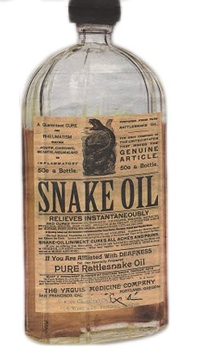In 1970 George Akerloff published a formal model describing how asymmetric information between buyers and sellers could lead to severe market failures. The idea has had so many applications it is no surprise he would later win the Nobel Prize in economics for it. Here we will consider the implications of his ideas in the context of the downstream firm model between the buyer of slot machines (the Casino) and the seller (the Manufacturer).
The setup is straight forward, the Casino wants to supply
its customer with a high quality slot machine, i.e. is fun to play for a long
time. However the Manufacturer sometimes
produces lemons and is thus forced to sell its portfolio at a price that
averages its lemons with its top performers.
Now if we had a Manufacturer/Designer that somehow “knew”
her game was perfect, she might be unwilling to sell at this average
price. Further if the Casino has no way
of verifying that her game was indeed of the highest quality, the Casino wouldn't be
willing to pay a higher price than the average price. In essence we are saying high quality Manufacturers should leave the
market. This is called the Bad driving
out the Good.
Is this what we see in the real Casinos of today? Certainly
some Players feel that way, but I think the quality of games, if anything, has
gone way up. To account for this we could
simply assume that Manufacturers have no earthly idea when they have a good
game, and in the long run the quality of games has been driven by technology
and the wider selection of games. However,
this would only be a half truth.
Manufacturers sometimes know they have a portfolio of games that are currently popular, and Casinos want access to them.
So why might a Manufacturer sell a superior product at a lower price? This has to do with the conventions in the
industry and innovation on the part of the Manufacturers to try to establish
some guarantee of quality.
As an example, leasing agreements for high profile themes or new brands
come with ready to swap arrangements at the option of the Casino, meaning that
the Casino can switch to any game in the Manufacturer's library if the Casino is unhappy with one
particular theme. So long as the
Manufacturer is selling or renting enough of the low quality games to make up
for the loss of selling the high quality game at a lower price, the deal seems fair to the Manufacturer. It would seem this is a mutually beneficial arrangement.
Nevertheless, we want to relate all of this back to the downstream
model in the previous post. The main
point there was that the Casino wants some ambiguity to help protect their
bottom line from the Manufacturer. Combined, this could have the interesting implication that even though the Casino has a strong
incentive to provide the Player with the best possible game, in the interest of
maximizing profit it may want to occasionally purchase bad games
to keep the Manufacturer off its trail.
Trying to fit all of this in one model tells us, among other things, that at some level the quality of games being made is
tied to the amount of information the Casino is willing to share back with the
Manufacturer. And really, that shouldn't
surprise anybody, until we realize it is the amount of information the Casino doesn't
want to share back to the Manufacturer that is operative. This could manifest itself in many ways, including prices that the Casino is willing to pay for the Manufacturer's various programs. So the prices are neither accurately signalling quality nor consumer demand, what then are they signaling?
No comments:
Post a Comment